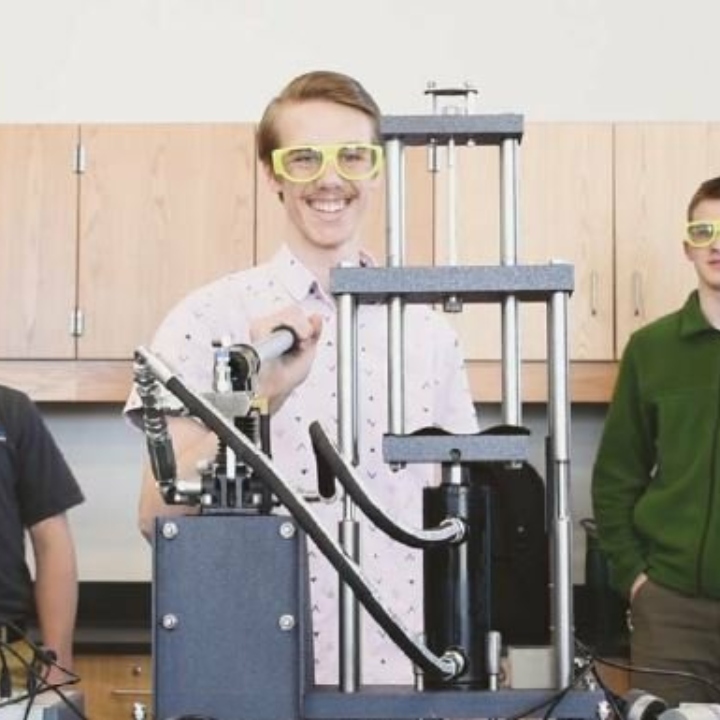Open House Celebrates New Labs
A $1.5 million investment brought in nearly 100 new pieces of mechanical engineering equipment. The idea is to give students a way to put all their theoretical classroom knowledge to practice.
An open house during Engineering Week celebrated the four new laboratories and machine shop. It’s all housed at the Brown County STEM Innovation Center.
John Katers, founding Dean of the College of Science, Engineering and Technology at UW-Green Bay gave the opening remarks:
“In order to be successful in their education at UW-Green Bay and ultimately in their engineering careers, it is incredibly important for these students to not only be taught by highly qualified faculty and staff , but also to have high-quality equipment and resources available for both instruction and research.”
The school partnered with LAB Midwest to outfit the space with equipment from TecQuipment. Renee Kirchner, CEO of LAB Midwest commented on the impact this investment will make:
“These state-of-the-art engineering laboratories will specifi cally equip this programme’s students with [hands-on] experience, positioning them to add tremendous value to their employers and our economy.”
Mechanical Engineering in Practice
In the laboratories, Mechanical Engineering students will get to apply theories of controls and measurement, thermodynamics, fluids and materials. The experiments are all designed to mimic the types of applications they will see on the job.
Assistant Professor Jagadeep Thota and his students held demonstrations during the open house. In the materials laboratory, students used the tensile testing machine to study the strength of various metals. In the fluids laboratory, a flow channel demonstrated how barriers and other objects alter water flow. Students will also learn on hydraulic benches where they can see how different turbines work.
Professor Thota was in charge of researching and choosing the equipment for these laboratories. He focused on experiments that would develop skills valuable to employers.
“The STEM area is very much in demand, and the job market is good in the area,” he said. “The equipment allows students to get practical experience for the workforce.”
Economic Impact
The program is part of the Richard J Resch School of Engineering at UW-Green Bay. There is a huge need for engineers in northeast Wisconsin, and the school was
founded to meet that demand.
Previously, the university offered a preengineering programme. Now, students can graduate with their BS in Mechanical Engineering. Partnerships with local technical colleges make it easy for two-year graduates to transfer to UWGreen Bay and finish their engineering degree.
In just two years, the school has met its five-year enrolment goal, and the Mechanical Engineering program has doubled expectations at nearly 100 declared majors.
As the programme grows, students from across the state will be drawn to study at UW-Green Bay, and that will feed into a pipeline of engineers who learn and work in the region.
Creating a Pipeline of STEM Talent
A hands-on focus isn’t the only unique thing about UW-Green Bay’s programme. What’s really exciting is the holistic approach to reaching the next generation
of STEM talent.
The Brown County STEM Innovation Center is a one of-a-kind facility. It’s located on the college campus, but the space is shared by several organizations, including UW-Extension and 4-H, Brown County, and the non-profit group Einstein Project.
Students of all ages use the building for various STEM groups and events where they’ll get a chance to see these engineering labs.
Kirchner summed up the impact of this when she said: “What young person of Northeastern Wisconsin, or the entire Midwest for that matter, wouldn’t visit hands-on laboratories like these and at least wonder, ‘Is engineering the right career path for me?’”
Prospects are high with this ecosystem of STEM talent being developed in Green Bay. It’s a great beginning to an even brighter future.

